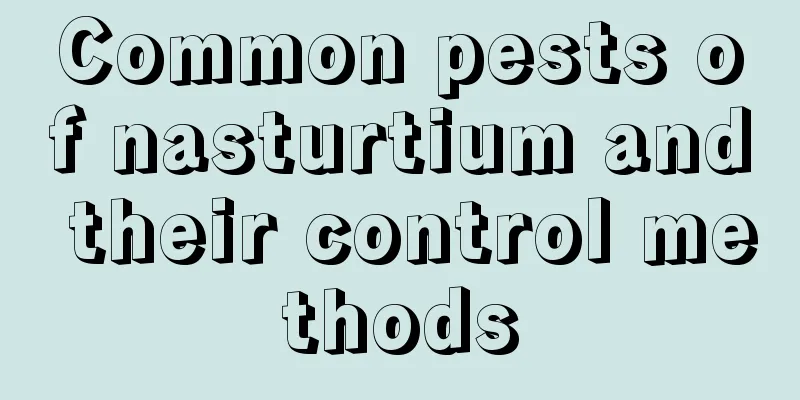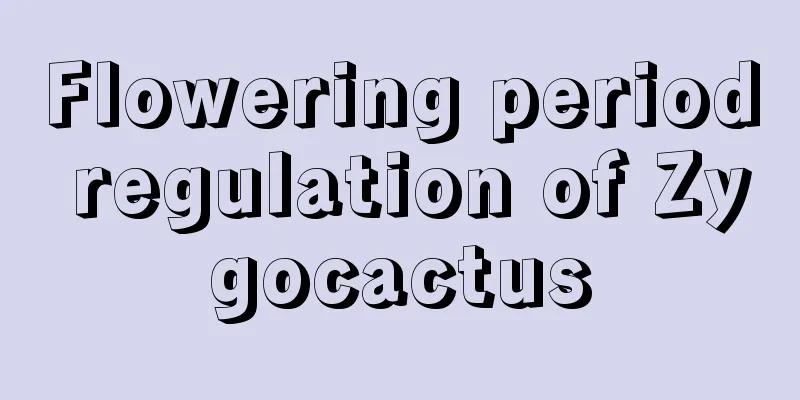How to grow chrysanthemums so that they bloom out of the pot?

|
The color of the chrysanthemum is very eye-catching, mainly orange-red and orange-yellow, which is very eye-catching, especially the number of its flowers, which are always in clusters and very abundant, and it is not difficult to maintain. Many people like this flower, so how to grow the chrysanthemum so that it will bloom out of the pot? Let’s take a look below. 1. Soil The requirements of Thousand-headed Chrysanthemum on the soil are not high. Generally, fertile, loose, breathable and well-drained sandy soil is chosen. Garden soil, humus soil and coal slag can be used. The recommended ratio here is garden soil: humus soil: coal slag = 4:4:2. 2. Sunlight Chrysanthemum likes plenty of sunlight. As long as there is enough sunlight, the chrysanthemum can grow very lushly and the flowers will be brighter. Therefore, we must maintain sufficient sunshine time during daily maintenance so that the chrysanthemum can be better maintained. However, sufficient sunlight does not mean that the chrysanthemum will be exposed to excessive sunlight. When the temperature is relatively high in summer or at noon, it is best to move it to a cool place to avoid sunburn, so that the chrysanthemum can grow better. 3. Watering Chrysanthemums like to live in moist and humid places. Therefore, you should water them regularly. For example, you should water them once in the morning and once in the evening. This will make the chrysanthemums grow better. However, you must control the amount to prevent excessive watering, which will cause the roots of the chrysanthemum to rot and affect the overall growth of the plant. We also need to pay attention to the prevention and control of diseases and pests. 4. Fertilization Chrysanthemums like fertilizer and need to be continuously fertilized during the growth process. Only in this way can the chrysanthemums grow better. During the growing season of chrysanthemum, use some fertilizers rich in trace elements as much as possible, which can make it grow branches and leaves while the root system is more developed. Fertilize it 2 to 3 times a month and stop fertilizing when it blooms in autumn. When it comes to flower fertilizers containing a variety of trace elements, what is recommended here are various compound fertilizers , such as Fei Xiaomei on the market. These fertilizers contain a balanced amount of elements such as nitrogen, phosphorus, and potassium, which can effectively meet the nutritional needs of chrysanthemums. Before flowering in autumn, we can also supplement it with potassium dihydrogen phosphate to allow it to obtain sufficient phosphorus, so that it can continuously differentiate flower buds and grow flower buds. 5. Pruning Chrysanthemum grows very fast and will burst the pot if not careful. Therefore, the branches and leaves should be properly pruned during the growing period. This will not only promote more branching and flowering of the plant, but also maintain the beauty of the plant and ensure sufficient absorption of nutrients. When the plant height grows to about 20 cm, you can pinch off the top, leaving 7 to 8 leaves; when the side branches of the chrysanthemum grow to 4 leaves, keep 3 leaves on each side branch and then pinch off the top. After that, pinch off the top every month or so, which can increase the number of branches of the chrysanthemum. When the crown diameter of the chrysanthemum plant reaches about 60 cm, some bamboo poles or bamboo rings can be inserted around the chrysanthemum plant to tie it up to prevent it from falling over. Generally, the last pinching is carried out around mid-July every year, and nutrients are supplemented to facilitate the growth and recovery of the chrysanthemum. It can be potted in late September every year, and the chrysanthemum will bloom in October. 6. Cuttings Chrysanthemum is usually propagated by cuttings in summer. If it is a single plant that has grown beyond the pot, it is usually propagated in April and May. If there are multiple plants planted in one pot , the cuttings are carried out in June and July. There are three things to do when grafting: first, poke holes and then graft. First, use a wooden stick slightly thicker than the cuttings to poke holes and then put the cuttings in to prevent damage to the cambium at the lower end; second, bury the cuttings shallowly, with the cuttings about 3 cm into the soil. Too deep will affect rooting; third, compact them so that the cuttings are in close contact with the soil and avoid leaving them hanging in the air. That’s it |
<<: How to propagate Helleborus and when to plant it
>>: How to deal with iron orchid after it blooms, how to keep it blooming again
Recommend
Can dragon fruit be grown in Hunan?
Can dragon fruit be grown in Hunan? Dragon fruit ...
What should I do if Forsythia blooms but does not bear fruit? What is the reason for not blooming?
1. Reasons why Forsythia blooms but does not bear...
How to make Kirin Palm alive by cuttings? Cutting methods and precautions
Kylin palm can be propagated by sowing and cuttin...
How to divide the pots of Rieger Begonia so that it can survive easily
When is the best time to divide the pots of Begon...
Finger carrot planting time and method
Finger carrot planting time The planting time of ...
How often should I water the money string?
How often should I water the money string? Money ...
How to grow water banyan
1. Breeding conditions 1. Water quality: Water qu...
The most prosperous entryway plants
1. Fortune Tree As the name suggests, the money t...
Gesang flower pictures
Introduction This is a flower that grows on the p...
What is the meaning of the red spider lily? What does the red spider lily blooming mean?
1. Meaning The meaning of red spider lily is ofte...
The Language and Legend of Cherry Blossoms
Flower Language The language of cherry blossoms i...
Milan Jasmine... add some ingredients, 200 flowers will bloom and the fragrance will fill the sky!
Jasmine You may have discovered that after you bu...
What kind of fertilizer is good for Chinese cabbage base fertilizer (base fertilizer application method)
Effect of base fertilizer on Chinese cabbage The ...
Can rice bran be used as flower soil? How to make flower soil with rice bran?
Can rice bran be used as flower soil? Rice bran c...
What are the cultivation methods and precautions of Oxalis?
How to cultivate Oxalis When growing Oxalis, the ...









